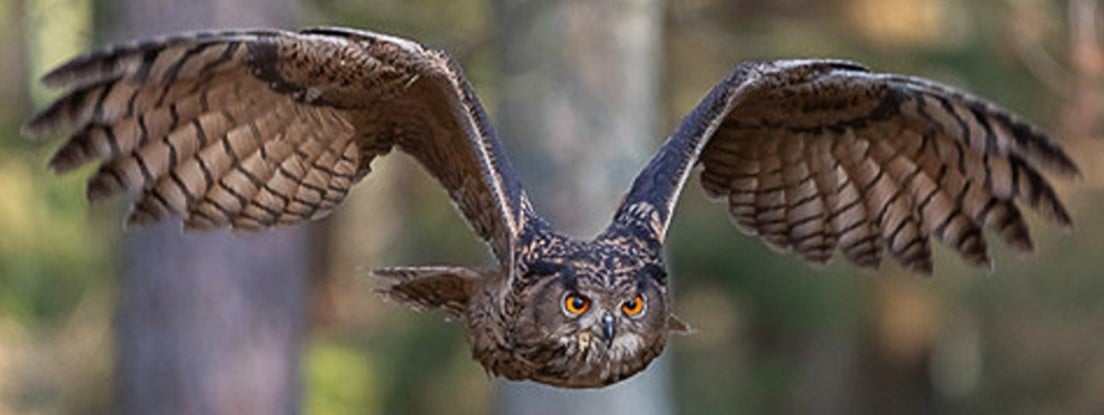Superbowl
For owls that are superb.

US Wild Animal Rescue Database: Animal Help Now
International Wildlife Rescues: RescueShelter.com
Australia Rescue Help: WIRES
Germany-Austria-Switzerland-Italy Wild Bird Rescue: wildvogelhilfe.org
If you find an injured owl:
Note your exact location so the owl can be released back where it came from. Contact a licensed wildlife rehabilitation specialist to get correct advice and immediate assistance.
Minimize stress for the owl. If you can catch it, toss a towel or sweater over it and get it in a cardboard box or pet carrier. It should have room to be comfortable but not so much it can panic and injure itself. If you can’t catch it, keep people and animals away until help can come.
Do not give food or water! If you feed them the wrong thing or give them water improperly, you can accidentally kill them. It can also cause problems if they require anesthesia once help arrives, complicating procedures and costing valuable time.
If it is a baby owl, and it looks safe and uninjured, leave it be. Time on the ground is part of their growing up. They can fly to some extent and climb trees. If animals or people are nearby, put it up on a branch so it’s safe. If it’s injured, follow the above advice.
For more detailed help, see the OwlPages Rescue page.
view the rest of the comments
You like to pose some real challenging questions for me! I will give you my best. 😅
I wasn't sure how detailed an answer I was going to get on this. Once we get into the finer details, the writing becomes a bit hard to both find, and for me to comprehend!
It's a bit unhelpful no real context was provided on this photo. The owl, to me, looks to be leaning a bit to its left, so I'm wondering if this is a photo of it mid-takeoff. It could be in the process of breaking its grip purposefully there.
I was able to find some more specific anatomy that could also account for gravity doing some of the work for those toe tendons.
From AvesBiology.com
So there seems to be an anti-slip mechanism to help maintain a lock of the grip even when the muscles are not flexed temporarily. This would still help keep a grip on prey, for instance, even if they need to flex their leg during a struggle. As long as pressure is on their equivilent of a paw pad, there is still some involuntary locking of the talons.
So I'm not 100% on if all that is what's going on, but that is my hypothesis on the whole situation. The tendon lock is something I had never heard of before, but it's a pretty ingenious way to help them maintain grip in a variety of situations.
Now that's interesting. The previous diagrams I've seen implied that the tendons produced all of the force: extended, open; collapsed, closed. This is clear they have more control over it than just leg extension.
Iiiinteresting.
This is the first I had heard of it as well. I never think about their actual feet since there looks to be so little there. That video Fugly shared though looks really great though, and the guy did a great job of talking how a raptor leg works as a whole to generate so much power and grip.
There is no end to the cool features some of these birds have! 😮